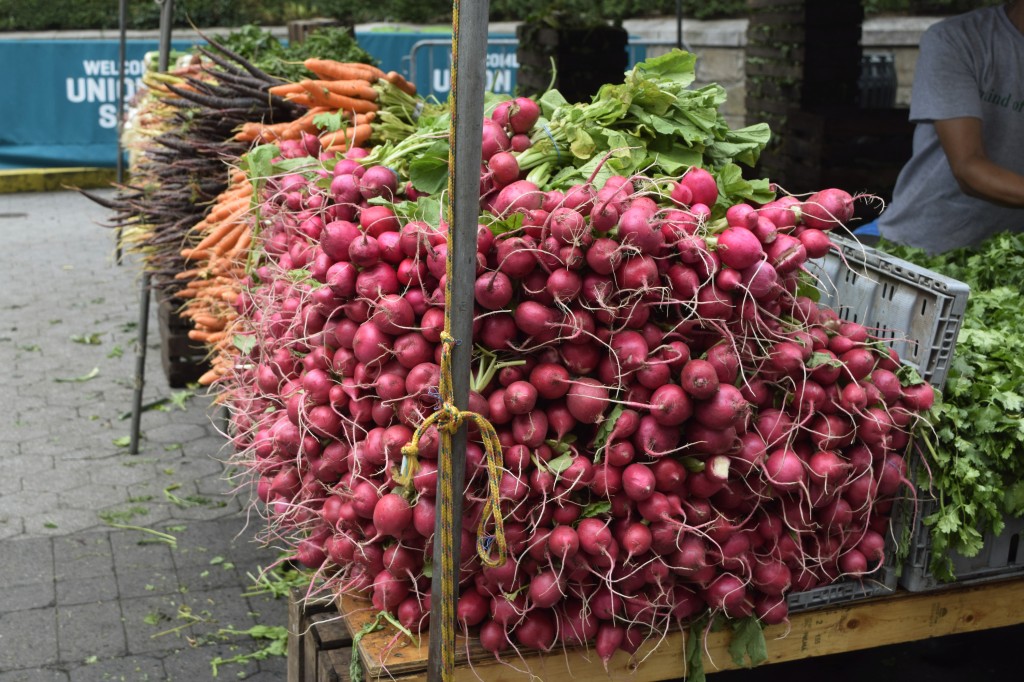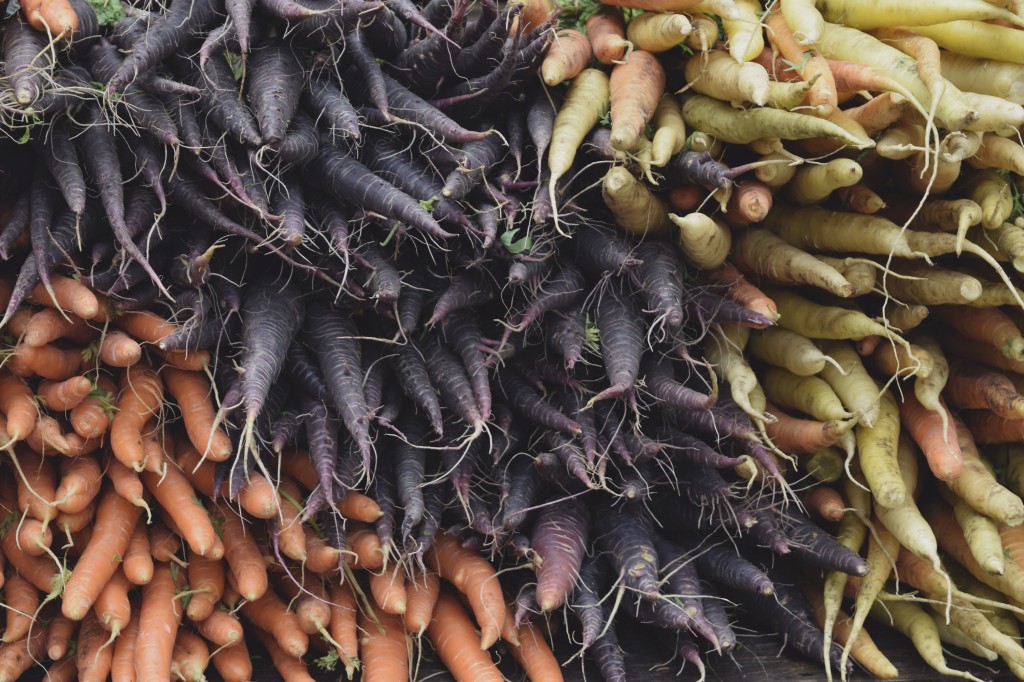A Guide to Sourcing Natural Dyes in NYC
When shopping for clothing or fibers, most people don’t consider where the bright colors and pigments that have altered the material come from or how we are able to have every color of the rainbow draped across our bodies. In most cases, the fabrics were dyed in a factory far away using dyes and chemicals that are not only harmful to the people tasked with using them, but also have extreme consequences to the environment. When these dyes are used, the excess is dumped into the water stream. As the water becomes contaminated, these chemicals find their way into the ocean, making it dangerous for the people, animals, and marine life living near the production to drink and use the water. It is impossible to expect everyone to completely stop buying and producing garments and materials with color. Instead, many have leaned towards dyeing with natural materials. Using different plants and insects that are natural to our environment allows for a safe and environmentally friendly way of creating bright and beautiful colors without compromising the environment.
Using different plants and insects that are natural to our environment allows for a safe and environmentally friendly way of creating bright and beautiful colors without compromising the environment.
For many, natural dyeing is a way of altering and creating beautiful textiles in an organic and eco-friendly way. Using plants and other materials that come from nature, dyers are re-learning the practices that our ancestors have used for thousands of years to create bright and beautiful colors. Despite this conscious effort to find less harmful alternatives for fabric dyeing, for someone who doesn’t have access to a large garden it may be daunting to figure out how to find and use natural dyes. A simple Google search gives the information on where to order the powders online. This often feels like the best alternative and many are led to ordering powders and other necessary materials online where they are shipped and transported from all over the world. Though this may still be better than using harsh chemicals for dyeing, the amount of fuel used to transport the materials, as well as the growing demand for the materials causing higher production and taking more from the environment than will allow for it to replenish itself will very quickly have negative effects.
In many cases the grocery store is an alternative to buying online. Things like onion skins, avocado, teas, spices, and some flowers are an easy and cheap alternative to buying online. While this is true, buying foods like avocados and teas in the winter or in climates that don’t naturally grow these plants is still encountering the problem of traveling across the country and sometimes the world in order to obtain the material. Avocados, for instance, don’t grow naturally in many climates and for someone living in New York has to travel a long distances, especially in the off season, in order for us to purchase them. Though it is possible to grow an avocado or onion at home, the process takes a long time and it is hard to grow enough to get a substantial amount for the dye. For someone who wants to be as environmentally conscious as possible, it is more feasible to buy locally grown plants at a place like the farmers market, grow your own plants that may thrive well indoors, or find plants that are naturally growing in the city.
A place like the farmers market takes the pressure off of the dyer to grow their own plants but also allows for them to be confident that the plants and materials they are dyeing with are coming from a local farm. There are markets in every borough that sell locally grown foods like raspberries, carrots, beets, cherries, blueberries, plums, and red cabbage as well as some spices like rosemary and dill. With every season comes different foods that are grown in the area and sold at farmers markets. Resources like the Urban Dyer’s Almanac have information on what goods can be dyed with at different points of the year as well as recipes that explain how to dye with the goods. Information on the Urban Dyer’s Almanac website about dye vendors revolves around the Union Square farmers market. This market is open Mondays, Wednesdays, Fridays, and Saturdays year round. A quick look at the website will show the long list of vendors selling throughout the year and though it may be hard to get a grasp of what dye materials might be sold the Almanac website lists farms and markets that produce materials for dyeing while also listing farms that produce the fibers to be dyed.
As the change in season brings different vegetation sometimes a desired color cannot be obtained with what is currently in season. A way to combat this is to buy a large quantity of goods while they are in season, and store them in the freezer or dry them out and create a powder to be used at a later date.
If a garden space is available to you, some plants like lilac and rosemary can be grown. Community gardens are sprinkled all over the city and can be a great alternative to buying dye materials. Plants that can grow in the New York environment and are commonly used for natural dyeing are; coreopsis, dahlia, marigold, weld, goldenrod, and woad each producing unique colors. Coreopsis, otherwise known as tickseed, produces various golden yellow shades. Dahlia flowers produce a variety of colors from burnt oranges to bright reds. Marigold creates a similar color range to both dahlia and coreopsis creating bright yellow, orange, and red colors. While weld and goldenrod also create some yellow hues they can both also be used to make some beautiful greens. Woad on the other hand creates bright blue colors similar to indigo. It’s a great, local alternative to create blue hues. All of these plants can be used to replace some more common dyes that are not native like cochineal and indigo, but because they mostly need more space than an indoor pot to grow, a garden space is important.
Community gardens are sprinkled all over the city and can be a great alternative to buying dye materials.
Along with those plants, some weeds can be used as well. Even though dye materials can be bought at farmers markets, there are still ways of scavenging for the materials in the ‘wild’ of the city. Weeds like dandelions can be used for creating light yellow hues; they can be found growing around the city in parks and along the street. Another weed that can be used for dyeing and create a variety of yellows and greens are mullein, while yarrow produces earthy brown hues and bedstraw produces red, and can be used to replace dyes like cochineal that are not native to the New York climate.
Though living in a city like New York presents its challenges with obtaining locally grown, natural dyes, it is possible. Buying from local farmers markets instead of online and in grocery stores, allows for the dyer to know that the products they’re purchasing have been grown locally with the environment in mind. While buying from the farmers market may be the best option for many, it is still possible to grow your own plants as well as find some growing naturally in the city. For more in depth information on creating a dye garden and using natural dyes some good books are; Harvesting Color: How to Find Plants and Make Natural Dyes, A Garden to Dye For: How to Use Plants from the Garden to Create Natural Colors for Fabrics & Fibers, Eco Color, and The Modern Natural Dyer.
Works Cited:
“About.” FIBERHOUSE COLLECTIVE, fiberhousecollective.com/
Farm, Joybilee. “Make a Rainbow with These 5 Weeds (Natural Dyes).” Joybilee Farm | DIY | Herbs | Gardening |, 20 June 2018, joybileefarm.com/weeds-natural-dyes/
Wolfe, Sarah. “In Search of Natural Dyes? Here's Some Help.” The Poughkeepsie Journal, Poughkeepsie Journal, 13 July 2014, www.poughkeepsiejournal.com/story/tech/science/environment/2014/07/13/home-grown-natural-dyes/12492261/
Herb of the Month, Central New York's Herb Expert, Herbs, Medicinal Herbs, Wholistic Healing, Herbs for Cooking, Growing Herbs, Herbs for Pets, www.mountainspringherbals.com/articles/article/7086112/130185.htm
NEW YORK CITY (NYC) WILD FLOWERS, PLANTS and ANIMALS., dia-inc.com/NewYorkCityWildFlowers.html
“Our Markets | GrowNYC.” Union Square Greenmarket Monday | GrowNYC, www.grownyc.org/greenmarket/ourmarkets
“Urban Dyer's Almanac.” NY Textile Lab, www.newyorktextilelab.com/memberships/






